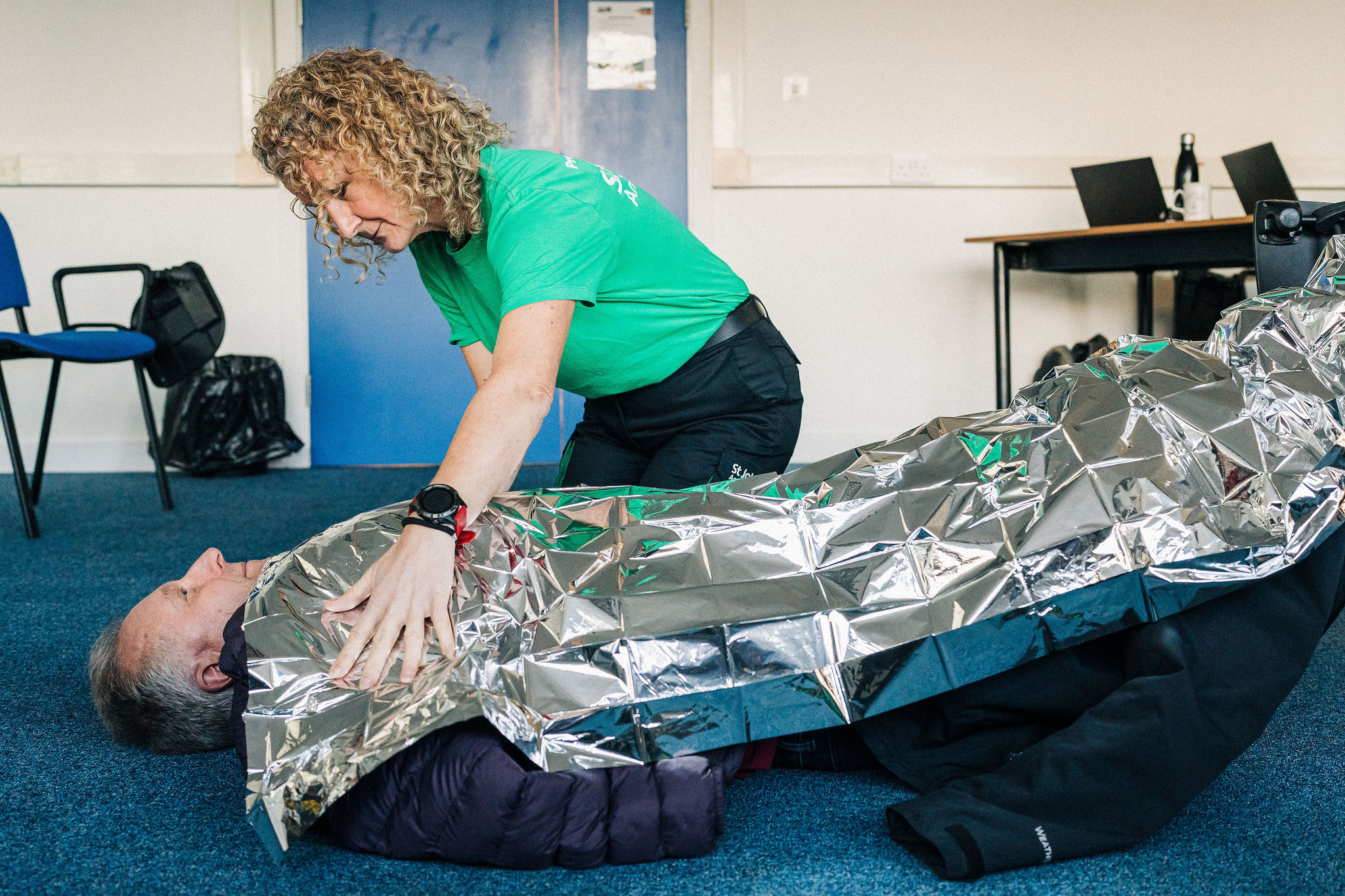Hypothermia - Symptoms & First Aid Advice

The body normally maintains a temperature of around 37oC (98.6oF). When the body temperature dips below 35oC (95oF) it is known as hypothermia. Moderate hypothermia can usually be reversed with treatment, however, severe hypothermia – when the body’s core temperature drops below 30oC (86oF) – is often fatal. The severity of hypothermia is determined on the speed of onset and how low the body temperature drops. In all cases, it's important to always persist with life-saving procedures until help arrives as survival may be possible even after prolonged periods of resuscitation.
What to look for
- Shivering, cold and pale skin
- Apathy, disorientation or irrational behaviour
- Lethargy or impaired responsiveness
- Slow and shallow breathing
- Slow and weakening pulse
- In extreme cases, the heart may stop
What to do
Follow the steps below:
Treating hypothermia when outdoors
Step 1
Take the casualty to shelter as soon as possible.
Step 2
If possible, remove and replace any wet clothing. Do not give them your clothes. Ensure their head is covered.
Step 3
Protect the casualty from the ground by lying them on a bed of dry leaves or blankets. Cover them with blankets or newspapers. Wrap them in a foil survival bag if available.
Step 4
Call 999/112 or send for emergency help.
Step 5
If the casualty is fully alert, encourage them to drink warm drinks and eat high energy foods such as chocolate.
Step 6
Monitor their breathing and level of response whilst waiting for help to arrive.
Treating hypothermia when indoors
Step 1
Rewarm the casualty by covering them in blankets and warm the room to about 25oC (77oF).
Step 2
Encourage them to drink a warm and drink and eat high energy foods such as chocolate.
Step 3
Seek medical advice; be aware that hypothermia may be disguising symptoms of other serious illnesses such as stroke and heart attack.
Step 4
Monitor their breathing, level of response and temperature whilst the casualty warms up.
